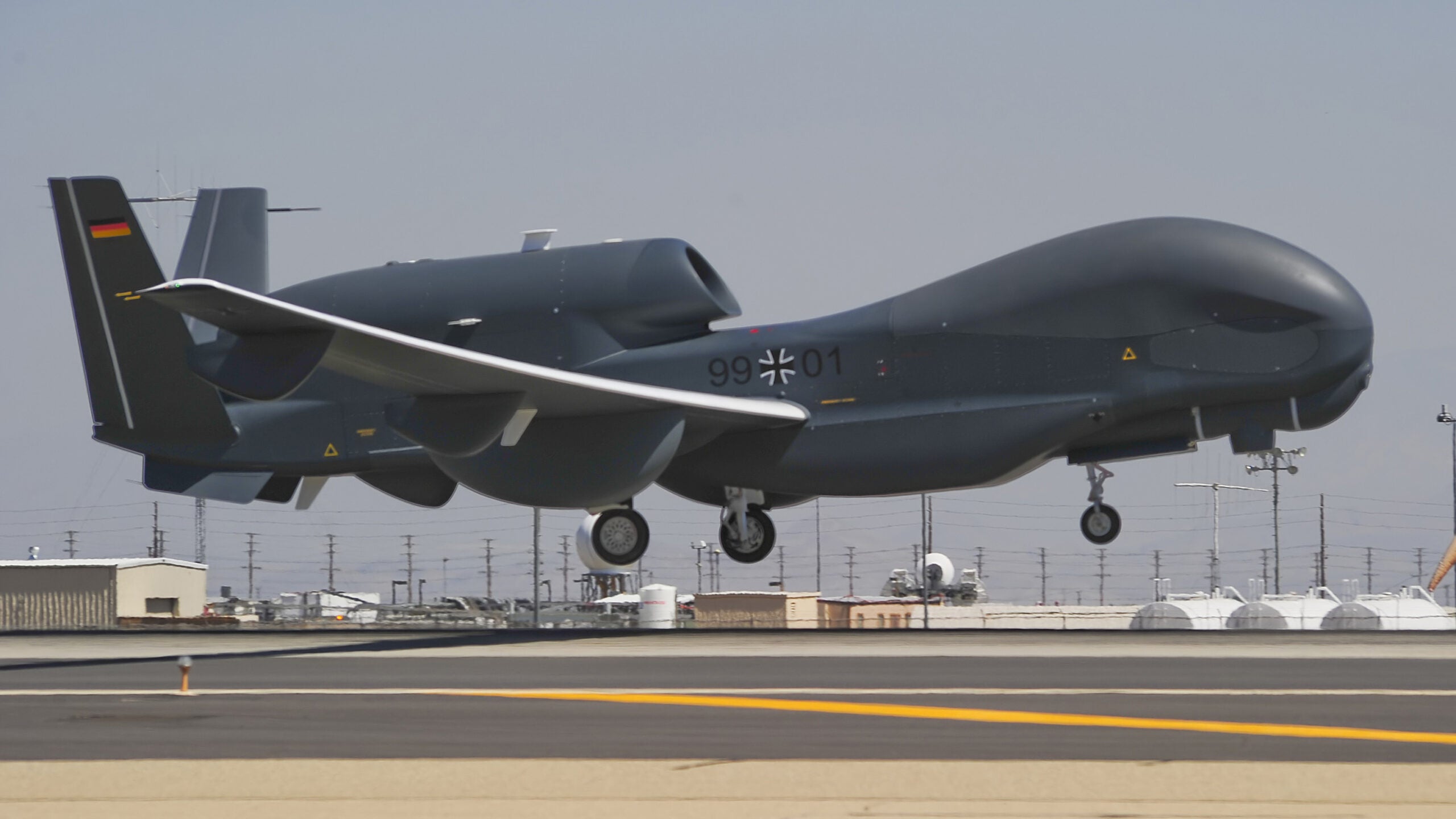The story of Germany’s Euro Hawk surveillance drone — a planned Europeanized version of the Northrop Grumman RQ-4 Global Hawk — has finally come to its sorry end. The ill-fated RQ-4E unmanned aerial vehicle is headed to a museum in the German capital, after plans to sell the one-off aircraft to Canada collapsed.
A report on the German-language Augen geradeaus!
defense website confirmed that the final resting place of the Euro Hawk will be the Bundeswehr Military History Museum at Berlin-Gatow Airfield.

Responding to a request under the Freedom of Information Act, the Ministry of Defense confirmed that, under an agreement signed in October 2019, spare parts, ground service equipment, test equipment, and special tools would be transferred to the NATO Support and Procurement Agency, which will presumably use them to support its fleet of five RQ-4D Alliance Ground Surveillance (AGS) drones, also based on the Global Hawk. The cost of the deal was not disclosed.
The remaining equipment, namely the single RQ-4E aircraft itself, plus the ground control stations will go to the aforementioned museum, being put on show as part of its permanent exhibition in 2022 at the earliest.
The RQ-4E airframe ending up as a museum exhibit was not what the German Defense Ministry expected when it launched the program, intended to field five examples of the signals intelligence (SIGINT) platform to replace the German Navy’s small fleet of specially configured manned Breguet Atlantic aircraft that had served in the same role — ranging mainly around the Baltic Sea — until 2010. The drones would have carried an Airbus-developed SIGINT system known as ISIS.

As it turned out, the Euro Hawk program was an unmitigated disaster. European aviation authorities repeatedly refused to certify the giant drone to fly over the continent. Fears that the unmanned aircraft could put civilian air traffic at risk in congested European airspace meant that European Aviation Safety Agency certification was only available for flights over unpopulated areas, and there was no guarantee that this would change in the near-term. With that in mind, the German military would not be unable to operate the aircraft from its own bases for either training purposes or operational missions.
Combined with major cost overruns and long delays, Berlin decided to scrap the program in 2013 after spending a total of $793.5 million. Amid the embarrassing fallout, the German Minister of Defense Thomas de Maizière defended his position under political pressure before stepping down from his position the same year.

Stripped of all military and mission equipment, the RQ-4E ended up in mothballs at Manching Air Base in Bavaria. A possible sale to Canada failed to materialize after Ottawa submitted a formal bid for the aircraft, despite not having any other similar drones in its inventory. It was reported in the Canadian media that Canada could have returned the drone to airworthiness and used it to monitor oil spills, ice levels, and marine habitats in the increasingly contested Arctic region. Exactly why this deal fell through is unclear, but, as The War Zone observed at the time, the drone lacked essential components, including its navigation and flight control systems, which rendered it unflyable without significant intervention and expenditure.
As for the German Armed Forces, they now pin their hopes on an all-new SIGINT platform, being pursued under the Persistent German Airborne Surveillance System program, or Pegasus.

De Maizière’s successor as defense minister, Ursula von der Leyen had originally wanted another unmanned platform based on the U.S. Navy’s MQ-4C Triton drone — yet another Global Hawk derivative — that could enter service after 2025. Unlike the RQ-4E, the MQ-4C was developed from the outset for civil certification.
Those plans changed last year when the ministry of defense instead opted for a manned solution, the Pegasus based on the Global 6000 bizjet. For the time being, however, no budget has been allocated to integrate the required SIGINT payload.
Originally, Germany’s Luftwaffe expected to get its hands on a first RQ-4E under the Euro Hawk program in 2012. Now, it looks like Germany is going to have to wait a little longer for its successor.
Contact the author: thomas@thedrive.com
